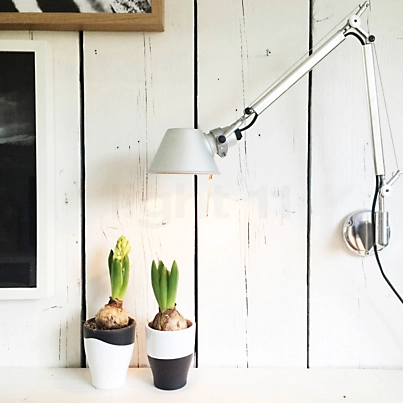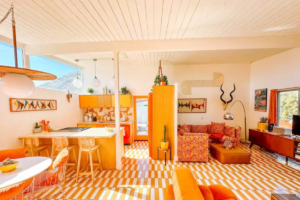Welcome to our guide on Warm and Cool Lighting, where we delve into the art of illuminating your home to create the perfect ambiance. Whether you’re aiming to craft a cozy, inviting space or a bright, energetic environment, understanding the nuances between warm and cool lighting is key. In this post, we’ll explore the differences, psychological impacts, and ideal uses of each type of lighting. We’ll also provide you with practical tips on how to choose the right lighting for your home, ensuring it aligns with your decor style, personal preferences, and energy efficiency goals. Let’s light up your space with the right glow!
Understanding Warm and Cool Lighting
What is Warm Lighting?
Warm lighting typically refers to light sources that emit a yellowish or orange hue. This type of lighting mimics the natural light of the sun during sunrise and sunset. It’s often associated with creating a cozy, inviting atmosphere. In terms of the color temperature scale, warm lighting usually falls between 2,700K to 3,000K.
What is Cool Lighting?
Cool lighting, on the other hand, emits a blueish or white light. It’s akin to the light of the sky on a clear day. Cool lighting is often used to create a more vibrant, energetic, and focused environment. On the color temperature scale, cool lighting ranges from 4,000K to 6,000K or higher.
The Color Temperature Scale: What It Means
The color temperature scale, measured in Kelvins (K), is a critical aspect of understanding lighting. It helps determine the ‘color’ of the light emitted by a source. Lower Kelvin numbers (2,700K – 3,000K) indicate warmer, yellower light, while higher Kelvin numbers (4,000K – 6,000K) signify cooler, bluer light. This scale is essential in choosing the right lighting for different rooms and moods in your home.
Understanding these basics of warm and cool lighting sets the foundation for making informed decisions about how to light your living spaces effectively. Whether you’re aiming for a snug, welcoming ambiance or a bright, stimulating environment, knowing the differences and how to apply them is key.
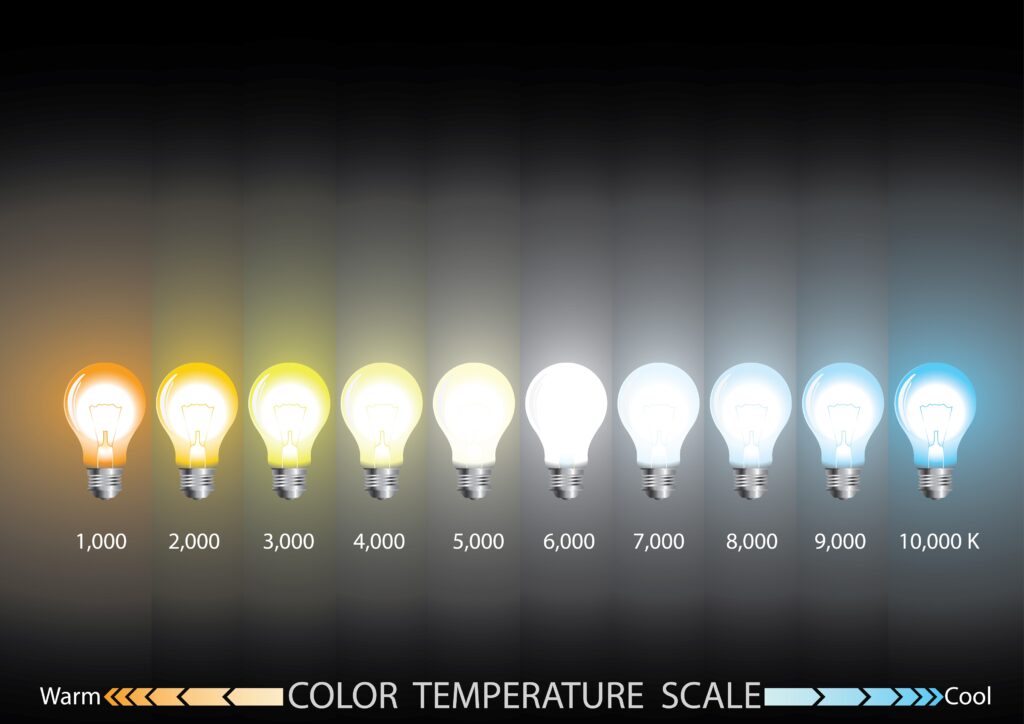
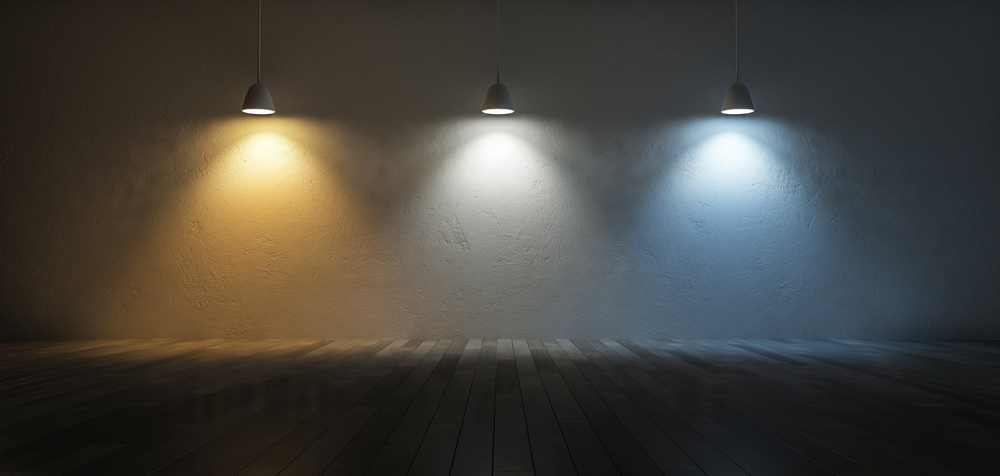
The Psychology of Lighting
How Warm Lighting Affects Mood and Atmosphere
Warm lighting, with its yellow and orange hues, has a profound impact on our psychological state. It’s often associated with comfort, relaxation, and warmth. This type of lighting can:
- Create a Cozy Ambiance: Warm lighting is perfect for spaces where you want to unwind, like living rooms or bedrooms. It encourages relaxation and can make a space feel more intimate and welcoming.
- Enhance Social Interactions: In communal areas like dining rooms, warm lighting can foster a sense of togetherness and encourage conversation.
- Promote Relaxation: It’s commonly used in bedrooms to signal the body that it’s time to wind down, aiding in better sleep quality.
The Psychological Impact of Cool Lighting
Cool lighting, characterized by its blue and white tones, has a different effect on our psyche. It’s often chosen for its ability to:
- Increase Focus and Alertness: Cool lighting is ideal for areas where concentration is key, such as home offices or study rooms. It can stimulate the mind and enhance productivity.
- Create a Modern and Clean Look: In spaces like kitchens or bathrooms, cool lighting can give a sleek, contemporary feel.
- Boost Mood: Interestingly, cool lighting can also have an uplifting effect, making it a good choice for areas where you want to feel energized.
The Interplay of Warm and Cool Lighting
Understanding the psychological effects of warm and cool lighting allows you to use them strategically in your home. By mixing and matching these lighting types, you can create spaces that not only look great but also feel right, catering to different moods and activities throughout the day. Whether you’re looking to relax, focus, or entertain, the right lighting can significantly influence the atmosphere and your emotional response to a space.
Ideal Rooms for Warm Lighting
1. Living Room: The Heart of Your Home
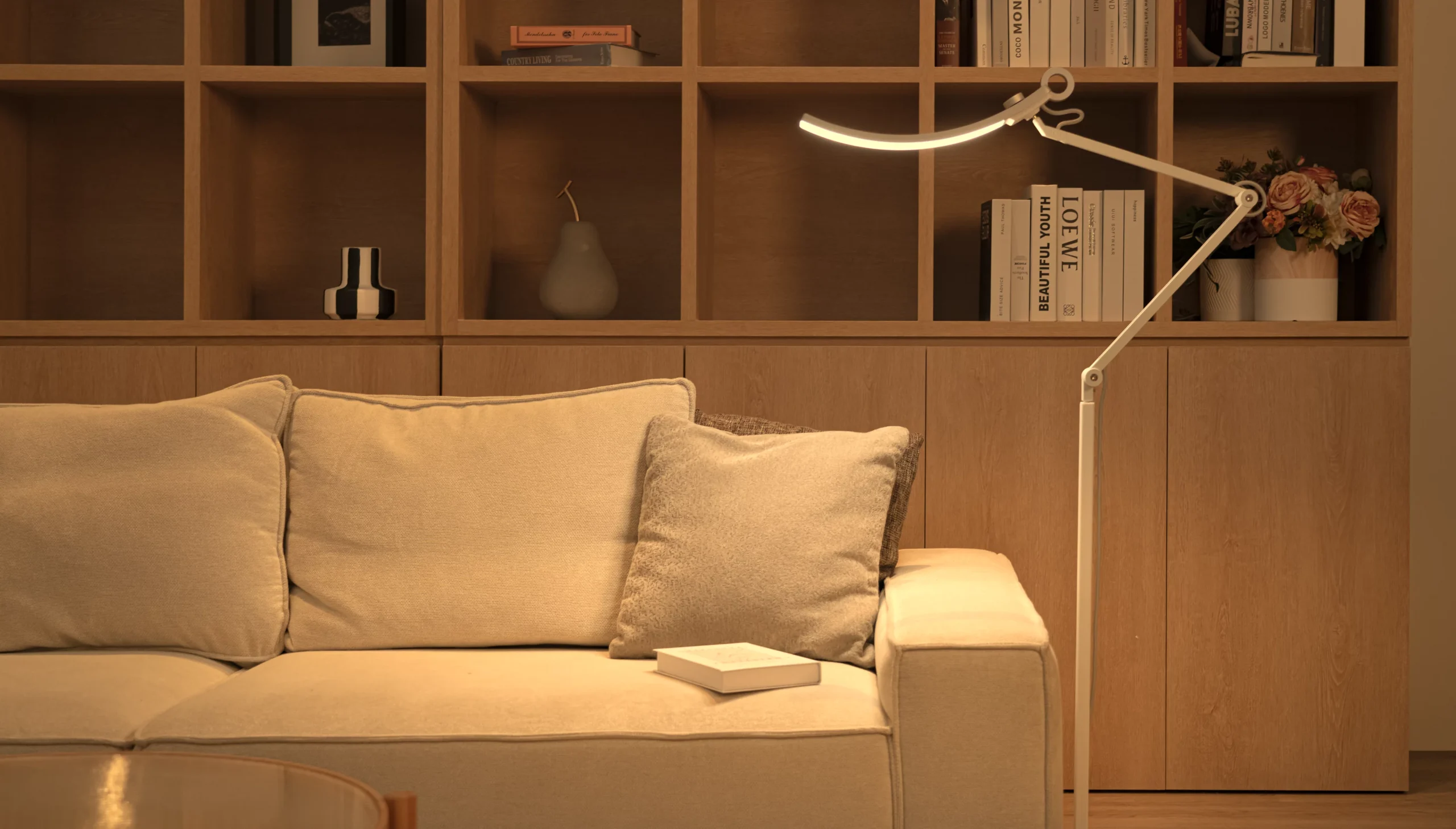
Credit: Benq
The living room is where you unwind after a long day, host friends, or enjoy family movie nights. Warm lighting sets the perfect tone for all these activities by creating a welcoming and intimate environment.
- Tips for Implementation:
- Use table lamps or floor lamps with warm-toned bulbs (around 2,700K–3,000K) to create pools of cozy light.
- Opt for dimmable overhead fixtures to adjust the brightness based on the occasion—brighter for gatherings, softer for relaxation.
- Add string lights or LED strip lights behind furniture for a subtle, magical glow.
2. Bedroom: Your Personal Sanctuary
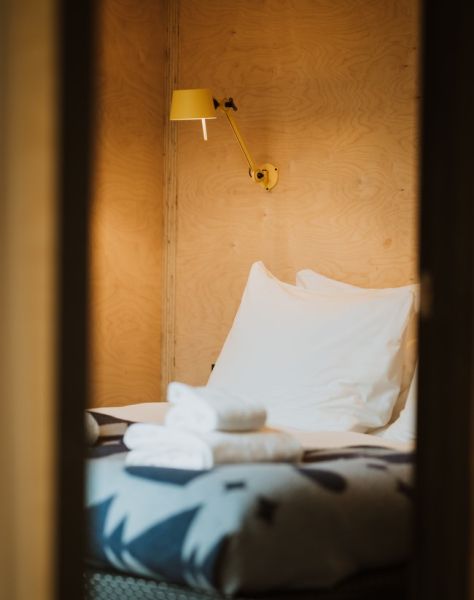
Credit: Benq
Your bedroom should be a retreat—a place to relax, recharge, and sleep soundly. Warm lighting helps signal to your brain that it’s time to wind down, making it ideal for this space.
- Tips for Implementation:
- Choose bedside lamps with warm white bulbs to create a soothing ambiance for reading or winding down.
- Install a warm-colored LED strip under shelves or around mirrors for functional yet calming lighting.
- Avoid cool or harsh lighting near your bed, as it can disrupt your natural sleep cycle.
3. Dining Room: Set the Mood for Meals
Whether you’re enjoying a quiet dinner or hosting a festive gathering, warm lighting enhances the dining experience by creating an inviting and intimate atmosphere.
- Tips for Implementation:
- Hang a statement chandelier with warm bulbs above the dining table for a focal point that doubles as mood lighting.
- Use candles or small accent lights to complement your main lighting source and add an extra layer of warmth.
- Consider smart bulbs that allow you to adjust the brightness and warmth of the light depending on the occasion.
4. Bathroom: Spa-Like Serenity
While bathrooms often lean toward cool lighting for tasks like applying makeup or shaving, incorporating warm lighting can elevate the space into a spa-like retreat.
- Tips for Implementation:
- Use warm vanity lights or sconces on either side of the mirror for a flattering, relaxing glow.
- Add a dimmer switch to overhead lights so you can lower the intensity during baths or nighttime routines.
- Incorporate warm-colored LED strips inside cabinets or along the base of the vanity for a luxurious touch.
5. Hallways and Entryways: A Warm Welcome
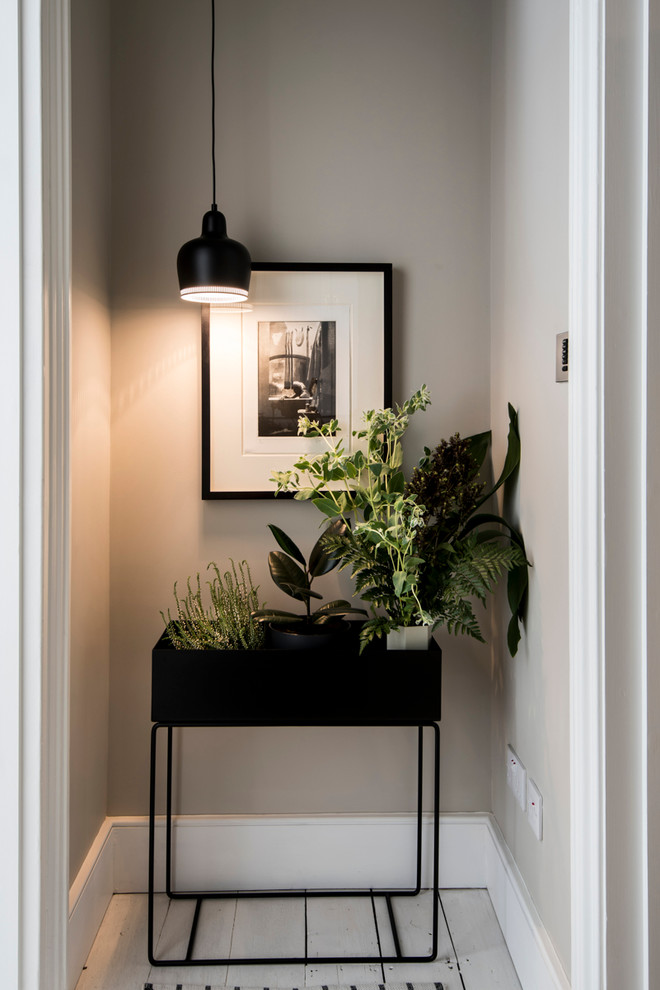
First impressions matter, and warm lighting in hallways and entryways ensures your home feels inviting from the moment someone steps inside.
- Tips for Implementation:
- Install wall sconces or pendant lights with warm bulbs to create a welcoming glow.
- Use motion-sensor lights with warm tones for nighttime safety without the harshness of cool lighting.
- Add a decorative table lamp or console light in your entryway for a touch of elegance.
Why Warm Lighting Works Wonders in These Spaces
Warm lighting excels in areas where comfort, relaxation, and connection are priorities. Its ability to mimic the natural hues of sunset or candlelight makes it inherently calming and human-centric. By strategically placing warm lighting in these key rooms, you can craft a home that feels like a warm embrace at the end of the day.
In the next section, we’ll dive into why cool lighting is a game-changer for productivity zones like kitchens and home offices.
Best Uses for Cool Lighting
While warm lighting is all about coziness and relaxation, cool lighting takes center stage in spaces where focus, clarity, and productivity are key. Its bright, crisp tones mimic natural daylight, making it perfect for task-oriented areas or rooms where precision matters. Let’s explore the best rooms to incorporate cool lighting and how you can use it effectively to boost functionality and style.
1. Kitchen: Brighten Up Your Culinary Space
The kitchen is a hub of activity—whether you’re chopping vegetables, reading recipes, or hosting brunch, visibility is crucial. Cool lighting ensures every detail is crystal clear while creating a fresh, clean aesthetic.
- Suggestions for Implementation:
- Install recessed ceiling lights with cool-toned bulbs (around 4,000K–5,000K) for even, shadow-free illumination across countertops and prep areas.
- Use under-cabinet LED strips in cool white to illuminate workspaces without taking up valuable counter space.
- Pair cool overhead lighting with dimmable warm pendants over dining areas or islands to create a balanced ambiance for meals.
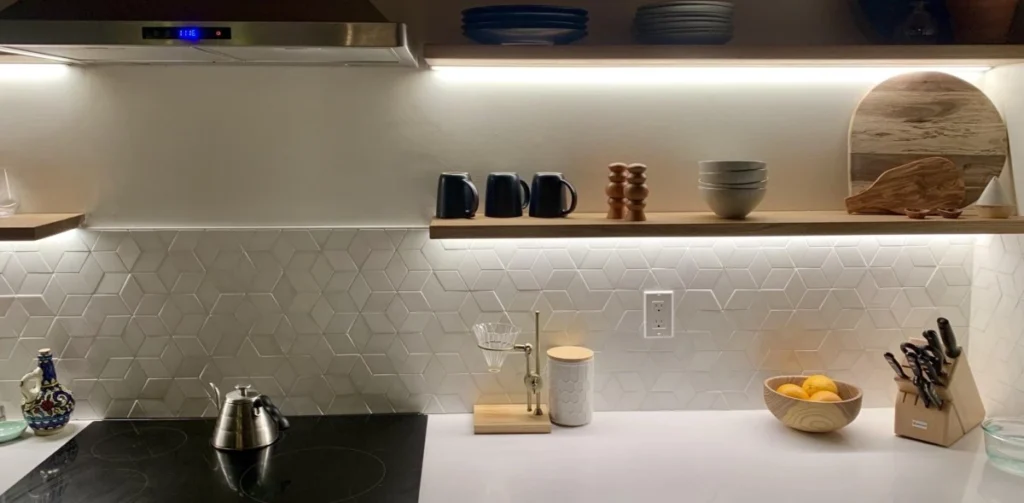
2. Home Office: Stay Sharp and Focused
Your home office should be a space that keeps you energized and productive throughout the day. Cool lighting helps reduce eye strain and keeps your mind alert during long work sessions.
- Suggestions for Implementation:
- Choose a desk lamp with adjustable brightness and a cool-toned bulb (around 5,000K) to mimic daylight and enhance concentration.
- Opt for cool overhead lighting or track lights to evenly illuminate your workspace and eliminate dark corners.
- Consider smart bulbs that allow you to adjust color temperature throughout the day—cooler tones for work hours and warmer tones as you wind down.
3. Bathroom: Perfect for Tasks and Clarity
Cool lighting is ideal for bathrooms, especially around mirrors where tasks like shaving, applying makeup, or skincare routines require precision.
- Suggestions for Implementation:
- Install vertical vanity lights on either side of the mirror with cool-toned bulbs (around 4,000K) for even, shadow-free lighting.
- Use a bright, cool overhead light or flush mount fixture to illuminate the entire space.
- Add a dimmer switch so you can soften the lighting for nighttime visits or relaxation.
4. Garage or Workshop: Illuminate Every Detail
If you spend time working on projects, repairing items, or organizing tools, cool lighting ensures you can see every screw, wire, or brushstroke clearly.
- Suggestions for Implementation:
- Install bright LED shop lights or fluorescent fixtures with cool tones to cover large areas evenly.
- Use adjustable task lighting with cool bulbs for detailed work like painting, crafting, or repairs.
- Incorporate motion-sensor lights with cool tones for convenience and energy efficiency.
5. Study or Reading Nook: Boost Concentration
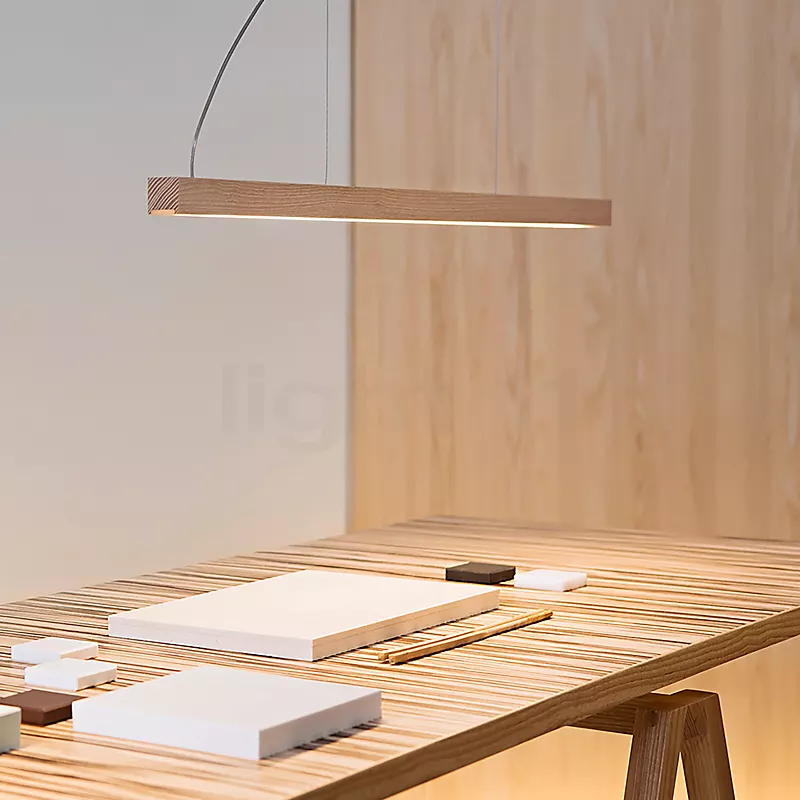
Credit: Light 11
Whether you’re studying, reading, or brainstorming ideas, cool lighting keeps your mind sharp and reduces fatigue during extended periods of focus.
- Suggestions for Implementation:
- Place a floor lamp or desk lamp with a cool-toned bulb near your reading chair or study table.
- Use wall sconces or pendant lights with cool tones to create a well-lit area without cluttering surfaces.
- Combine cool task lighting with soft ambient lighting to avoid an overly harsh environment.
Why Cool Lighting Works Wonders in These Spaces
Cool lighting excels in areas where visibility, accuracy, and mental clarity are essential. Its ability to mimic natural daylight not only enhances functionality but also creates a fresh, modern aesthetic. By incorporating cool lighting into these key rooms, you’ll create a home that supports both productivity and practicality.
Next, we’ll compare warm vs. cool lighting room by room to help you decide which type works best for each area of your home.
Warm vs. Cool Lighting: Energy Efficiency
Energy Efficiency of Warm Lighting
Warm lighting, typically associated with lower Kelvin ratings (2,700K – 3,000K), has traditionally been less energy-efficient compared to cool lighting. This is mainly because many warm light sources, like incandescent bulbs, consume more energy to produce light.
- Traditional Bulbs: Incandescent bulbs, which emit warm light, are less efficient as they convert a significant amount of energy into heat rather than light.
- LED Alternatives: However, with the advent of LED technology, warm LED bulbs have become more energy-efficient, offering a balance between warmth and efficiency.
Energy Efficiency of Cool Lighting
Cool lighting, with higher Kelvin ratings (4,000K – 6,000K), is generally more energy-efficient. This is particularly true for fluorescent and LED lights, which are designed to be more efficient.
- Fluorescent Bulbs: Cool fluorescent bulbs are more energy-efficient than their warm counterparts, consuming less energy for the same amount of light output.
- LED Efficiency: Cool LED bulbs are also highly efficient, providing bright light with minimal energy consumption.
Environmental Impact
The environmental impact of lighting largely depends on its energy efficiency and the type of bulb used.
- Reduction in Energy Consumption: More efficient lighting (like cool LEDs) leads to lower energy consumption, which in turn reduces the carbon footprint.
- Longevity of Bulbs: Energy-efficient bulbs, whether warm or cool, typically have a longer lifespan, reducing the frequency of replacements and associated waste.
Cost-Effectiveness
While the initial cost of energy-efficient bulbs might be higher, the long-term savings in energy bills and reduced replacement costs make them a cost-effective choice.
- Warm LEDs: Warm LED bulbs, though initially more expensive than traditional incandescents, offer long-term savings due to their efficiency and longevity.
- Cool LEDs and Fluorescents: Cool lighting options, especially LEDs and fluorescents, are not only more energy-efficient but also cost-effective in the long run.
Conclusion
When choosing between warm and cool lighting for energy efficiency, it’s important to consider the type of bulb. Modern LED technology has bridged the gap, making both warm and cool LEDs highly efficient. The key is to select the right type of bulb that aligns with your lighting needs, energy efficiency goals, and environmental considerations.
Tips for Choosing the Right Lighting
Selecting the right lighting for your home is crucial for both aesthetics and functionality. Here’s a guide to help you choose the appropriate lighting type for different decor styles and personal preferences.
Consider Your Decor Style
- Modern and Contemporary: Often pairs well with cool lighting for a sleek, clean look.
- Traditional and Classic: Warm lighting complements these styles, creating a cozy, inviting atmosphere.
- Industrial: Cool lighting can enhance the raw, unfinished look typical of industrial decor.
- Bohemian: Warm lighting adds to the eclectic, cozy feel of bohemian style.
- Scandinavian: A mix of warm and cool lighting works well here—warm lights for coziness and cool lights for functionality.
Match Lighting to Room Function
- Living Areas: Warm lighting is ideal for relaxation and socializing.
- Work and Study Spaces: Cool lighting is better for concentration and productivity.
- Kitchens and Bathrooms: Cool lighting provides bright, clear illumination for tasks.
Personal Preferences Matter
- Mood and Atmosphere: Choose lighting that aligns with the mood you want to create in each room.
- Color Temperature: Decide if you prefer the warm, yellowish glow or the cool, bluish light.
Lighting Layers
- Ambient Lighting: Provides overall illumination (e.g., ceiling lights).
- Task Lighting: Focuses on specific areas for activities (e.g., desk lamps).
- Accent Lighting: Highlights features or creates mood (e.g., wall sconces).
Energy Efficiency
- LED Bulbs: Consider energy-efficient options like LEDs, available in both warm and cool tones.
- Longevity: Choose bulbs with a long lifespan to reduce frequent replacements.
Checklist for Choosing Lighting
- Room Function: What activities will primarily take place in the room?
- Decor Style: What is the overall aesthetic of the room?
- Mood and Atmosphere: What feeling do you want the lighting to evoke?
- Lighting Layers: Are you incorporating ambient, task, and accent lighting?
- Energy Efficiency: Are you opting for energy-efficient bulb options?
- Color Temperature: Have you decided on warm or cool lighting?
- Budget: What is your budget for lighting fixtures and bulbs?
By considering these factors and using this checklist, you can make informed decisions about the lighting in your home, ensuring it meets both your aesthetic and practical needs.
DISCLOSURE
Hey there, awesome reader!
I just want to be upfront and let you know that some of the links on this blog are affiliate links.
That means if you click on one of those links and end up making a purchase,
I may earn a small commission—at no extra cost to you.

